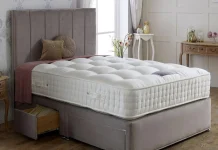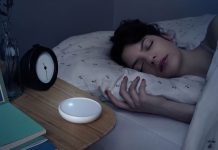Handheld nebulizers are a convenient and portable respiratory treatment option for individuals with respiratory conditions. These nebulizers can be easily carried around and provide quick relief for conditions such as asthma, COPD, and bronchitis. These nebulizers are compact and lightweight, making them easy to carry around and use on the go. Handheld nebulizers are also relatively affordable. Additionally, these nebulizers are typically rechargeable, making them a cost-effective option for individuals who require regular nebulizer treatments.
Research suggests that handheld portable nebulizers start working within 5 minutes after beginning a nebulizer treatment. This is much faster than taking medication with similar salts orally, which can take up to 30 minutes to show effects. The handheld nebulizer is a convenient and effective respiratory treatment option for individuals with respiratory conditions. Consult with a healthcare provider to determine if a handheld nebulizer is an appropriate treatment option for your specific needs.
Table of Contents
Handheld Nebulizers
Handheld nebulizers are compact, portable devices that enable the administration of medication directly to the lungs of patients suffering from respiratory afflictions such as asthma, cystic fibrosis, and COPD. Unlike their larger, external power source-requiring traditional counterparts, these nebulizers are battery-operated and considerably lighter and more compact, allowing for convenient portability that facilitates patient mobility while effectively managing their respiratory symptoms.
This handheld medication delivery method operates by transforming liquid medication into a delicate mist that can be effortlessly inhaled by the patient, ensuring medication delivery directly to the lungs. Handheld nebulizers’ advantages include their unparalleled convenience and ease of use, which enables them to be used at home, work, or on the move. Handheld nebulizers are also more unobtrusive, ensuring their use does not draw unwanted attention. Moreover, these devices are generally more affordable than traditional nebulizers, making them an ideal alternative for budget-conscious patients.
Patients with a variety of respiratory conditions can get liquid medicine through the use of portable nebulizers, which is flexible and practical. In addition to respiratory treatment, paediatrics, otolaryngology, obstetrics & gynaecology, surgery, and emergency medicine, these nebulizers are also suitable for usage in other healthcare settings. Handheld nebulizers are a useful tool for treating respiratory diseases and enhancing patient outcomes due to their portable form and compatibility with a range of drugs.
Benefits Handheld Nebulizers
Handheld nebulizers are portable contraptions that administer medication directly into the lungs, providing relief to individuals suffering from respiratory conditions such as asthma and COPD. The utilization of these nebulizers comes with various advantages that include portability and convenience, ease of use, faster delivery of medication, reduced noise and power consumption, and improved medication effectiveness.
Convenience and portability
The convenience and portability of these devices are unparalleled, as they are small and lightweight, allowing ease of carriage from place to place. This feature makes them an excellent option for frequent travelers or individuals that require medication on the go. The ease of use of handheld nebulizers is notable, requiring minimal effort, and typically comes with a mouthpiece or mask that fits snugly over the nose and mouth, facilitating medication inhalation. The simplified one-button operation feature of some nebulizers makes the process even easier.
Handheld nebulizers speed up the alleviation of symptoms including shortness of breath and wheezing by delivering medicine directly into the lungs. Since these nebulizers are more effective than conventional inhalers, relief occurs more quickly.
Reduced noise and power consumption
Handheld nebulizers are amazingly quiet and require very little power, which makes them more environmentally friendly and acceptable for use in public areas or at night while people are sleeping. This is a notable benefit over other nebulizers. Handheld nebulizers carry medication directly to the root of the issue, enabling it to take effect more quickly and more efficiently. This improves the efficacy of treatment. Additionally, compared to traditional inhalers, these nebulizers can give a greater variety of drugs.
The use of handheld nebulizers presents a convenient, easy-to-use, and effective option for individuals suffering from respiratory conditions. The benefits of faster medication delivery, reduced noise and power consumption, and improved medication effectiveness make it an ideal option for these individuals.
A step-by-step guide to using a handheld nebulizer
After carefully drying them with a clean towel, wash your hands with soap and water. This will help keep germs from spreading and guarantee that the nebulizer stays sterile.
Adhere to the manufacturer’s directions while putting the nebulizer together. This may entail securing the mouthpiece or mask, joining the tubing, and adding the required medication to the medication cup.
Sit up straight and comfortably. If you’re wearing a mouthpiece, tuck your lips securely around it before inserting it between your teeth. If you’re wearing a mask, ensure sure it fits tightly against your face and is placed over your mouth and nose.
Start the nebulizer, then take a few deep breaths via your mouth or nose. The medication should be inhaled over 10-15 minutes, or until the medication cup is empty.
After using the nebulizer, turn it off and disassemble it. Clean the nebulizer parts according to the manufacturer’s instructions, and store it in a clean, dry place.
Best practices for maintaining and cleaning:
Maintaining and cleaning a handheld nebulizer is important to ensure its effectiveness and safety. Here are some best practices for cleaning a nebulizer:
Wash hands well before handling the nebulizer.
Disassemble the nebulizer after each use, then wash the mouthpiece/mask, medication cup, and T-shaped connection with warm water and mild dish detergent. Use water to thoroughly rinse.
Do not wash or rinse the tubing or the nebulizer compressor. It is important to follow the manufacturer’s instructions for cleaning and maintaining the nebulizer as some models may have specific cleaning instructions. Remember to unplug the machine before cleaning it. Proper cleaning and maintenance of your nebulizer can help it last longer and ensure that it works properly when you need it.
Conclusion
Proper maintenance and cleaning of a nebulizer are essential to ensure its effectiveness and safety in delivering medication to the lungs. The cleaning process typically involves disassembling the nebulizer and washing its components with mild soap and warm water. It is also crucial to follow the manufacturer’s instructions and recommendations for cleaning and disinfecting the nebulizer. By taking these necessary steps, one can maintain their nebulizer and continue to receive the medication they need for respiratory conditions such as asthma and COPD.








